In the United States, sheep produce income from the sale of meat, wool, and milk. The US sheep and wool industries have seen significant changes in recent decades, as evidenced by smaller inventories, falling production, shrinking revenues, and fewer operations. Let’s check out more information about sheep farming in the USA.
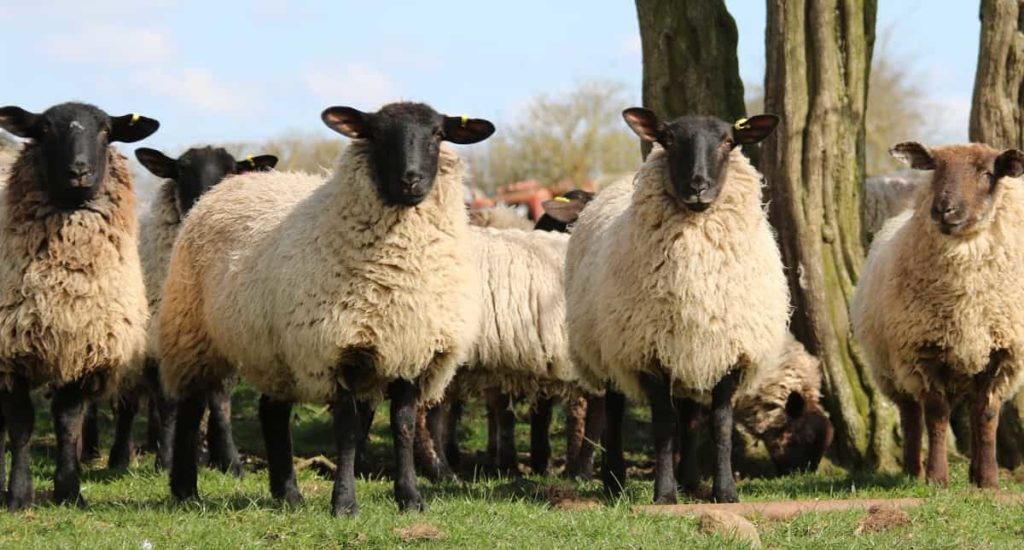
Historically, lamb and mutton were seen as by-products of wool production, although wool receipts were a small part of income. As wool revenues have plummeted, the producer has turned his attention to the possibility of lamb and mutton products and other by-products such as sheep leather. Despite these challenges, the American sheep industry has many opportunities to increase industry efficiency and competitiveness.
Highlights
In the United States, Texas has the most sheep and lamb breeds, followed by California and Colorado.
- There are 5.21 million sheep and lamb heads in the United States.
- About 25% of sheep and lambs in the United States are in Texas and California.
Sheep-raising operations range in size from small herds to large western operations. There are two types of enterprises: stock sheep production and lamb feeding. Stocks manage sheep-grazing pastures and herds grazing on range fodder, often on barren western lands with a few alternatives uses. Stock sheep breeders sell lambs that are either slaughtered or kept in feedlots. Feeder lambs are raised on fodder until they are close to 60-80 pounds and then placed in feedlots to be fattened and removed for slaughter.
In case you miss this: Dairy Disease Symptoms and Treatment for Cows, Cattle, Goats, and Sheep
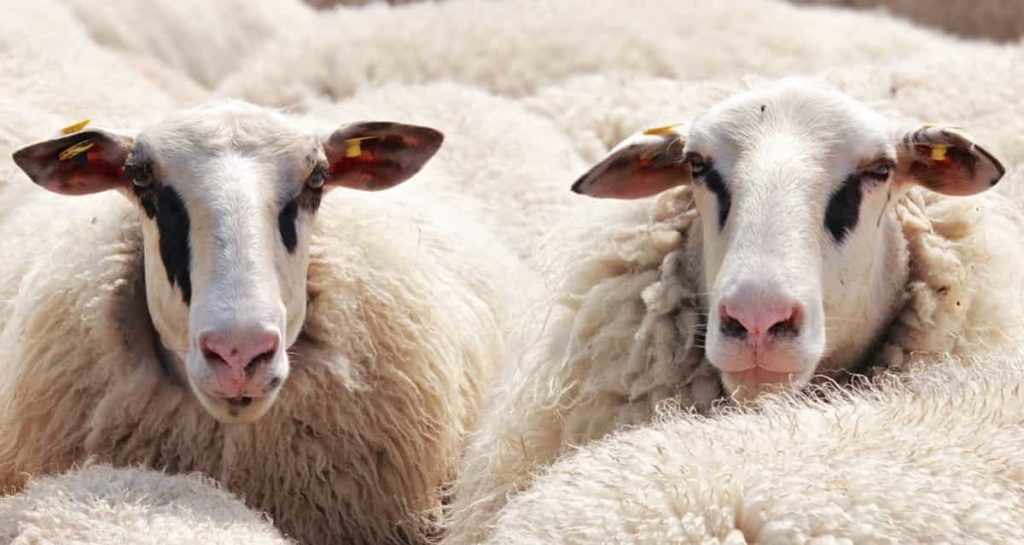
Although the sheep industry accounts for less than 1% of the US livestock industry’s receipts, sheep operations are important to the economies of many states. More than two-thirds of U.S. operations are located in the southern plains, mountains, and Pacific, and regional distribution has been strong since the early 1900s. The largest sheep-producing state is Texas, followed by California.
Efforts to diversify sheep production have increased interest in sheep production. Hair sheep have high parasitic resistance and low heat stress and are known to provide a wide range of potential for lamb. In addition to the sheep’s ability to produce lamb and mutton, their leather is a viable source of income. The US market for lamb and mutton has weakened over the decades.
Most sheep meat is sold as lamb and it comes from animals under 14 months of age. Mutton comes from older animals, and although often less expensive, it is no less popular with consumers. Consumers of American Lamb prefer high-quality cuts such as legs and loins. Some low-quality, low-demand cuts go into the pet food industry or are exported.
The Middle East, the Northeast with a large number of consumers in the Caribbean and Africa, is a large market for lamb products. The common lamb user is an elderly, relatively well-established ethnic person who lives in a metropolitan area such as New York, Boston, or Philadelphia northeast or west coast in San Francisco or Los Angeles and prefers food only. In contrast, buyers of beef, and pork are geographically dispersed, younger, and ethnically less likely to buy a variety of cuts.
Lamb feeding industry
Colorado is one of the most important lamb feeding areas in the United States. Other states that feed a lot of lambs like Texas, California, Iowa, and Oregon. Lamb feeders buy 60 to 90 pounds of lamb to finish in feedlots. Sometimes, lambs are grazed in alfalfa fields.
In case you miss this: Top 50 Sheep Farming Tips, Ideas, and Techniques
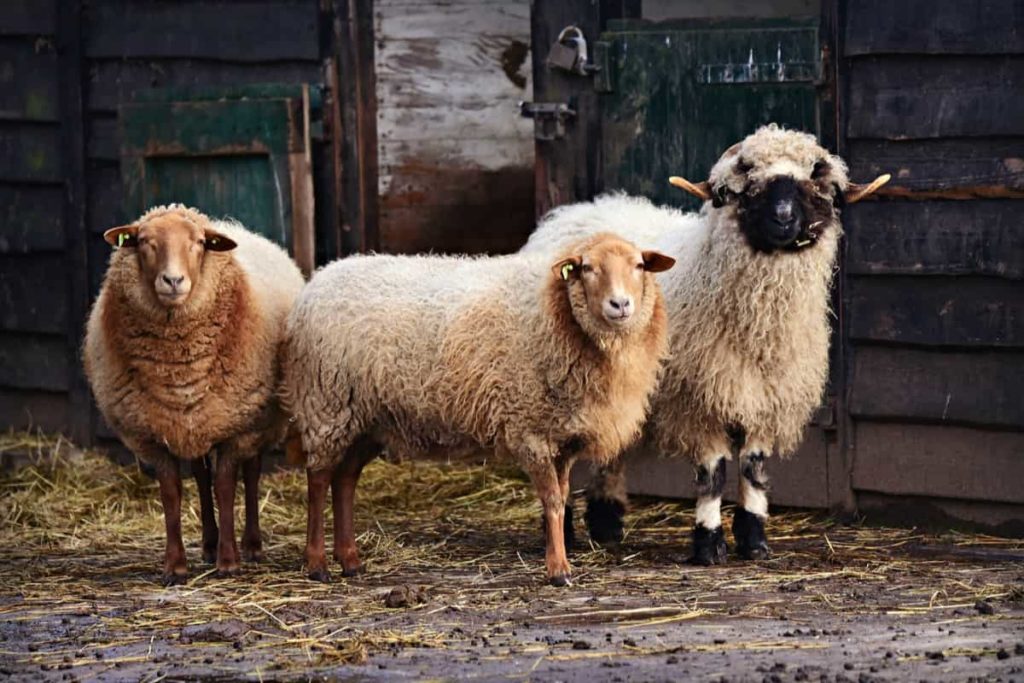
The lamb feedlot industry has struggled in recent times due to higher feed prices and higher prices of feeder lamb, which has come to the fore due to the increasing demand for lightweight slaughtering sheep in non-traditional markets.
Small sheep farms in the USA
Although the US sheep industry is still dominated by small to large operations, these operations continue to decline for a variety of reasons. At the same time, small herds are growing, especially in the eastern half of the United States, where the majority of lambs are eaten. To be profitable, small flocks must be productive and have access to the best markets. Sheep are especially popular on small farms where sustainable farming methods are preferred, such as clearing sheep pastures.
Changes in the US sheep industry
Unlike other agricultural enterprises, sheep farming is not a “get rich quick” scheme. Profit margins are narrow. To raise money by raising sheep, you will need several sheep breeds, maybe more than 500. While some farmers earn most of their income from sheep farming, sheep rearing is often a part-time or secondary business.
In case you miss this: Meat Sheep Breeds, List, and Advantages
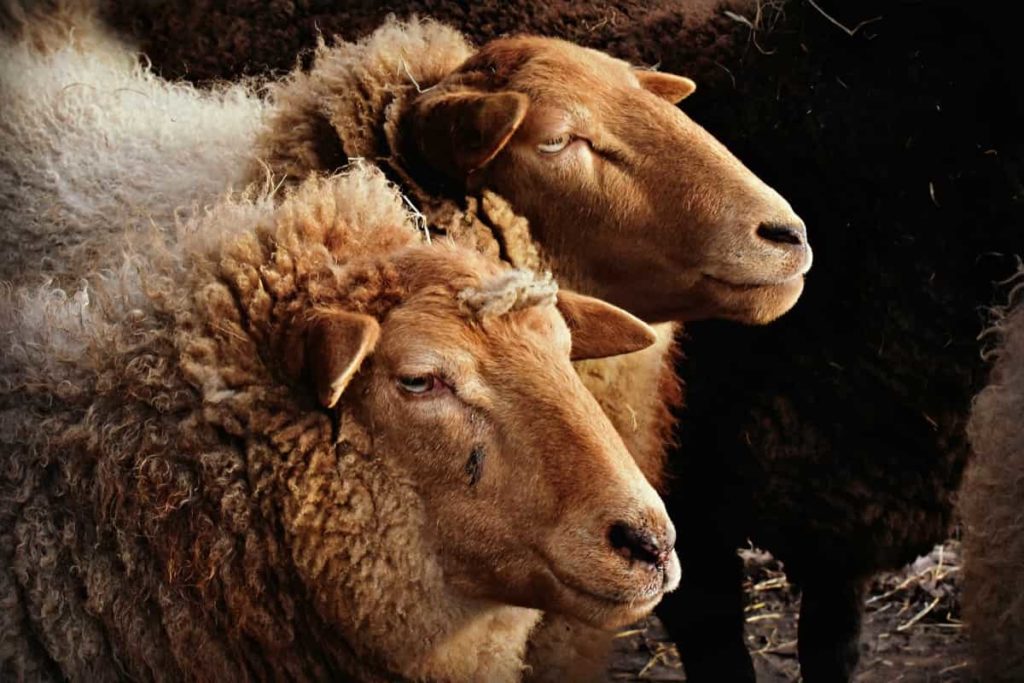
Sheep farmers earn their living by selling lambs wool and related products. Although it varies by state and farm, most of the revenue comes from the sale of lambs. There are three sources of income for dairy farmers: lamb, wool, and milk (or dairy products). Some farmers earn an income by renting their sheep. Some sheep are raised for biomedical purposes.
Domestic sheep were used primarily for homemade textiles, wool, and to a lesser extent, meat. In the US, the sheep industry is one of the most complex industries in animal husbandry. The sheep farming business is helpful in providing wool and pellets for textiles, mutton (mature sheep) for consumption, and milk from the dairy sheep industry.
Several components of the sheep industry have made adjustments to investing in new technologies. These changes are turning the industry towards a more efficient and competitive future. Therefore, it concludes that a better description of the current US sheep industry is ” an industry in transition.”
Structure of Sheep farming in the USA
Commercial sheep production in the United States consists of two main types of operations;
- Range sheep operations – It consists of large flocks that graze on local or non-improved pastures that are common in the western states, and
- Farm flock operations – It consists of small flocks (often less than 50 heads) and rearing in small improved pastures or feedlots, which are common in the midwestern and eastern states.
From these operations, sheep farming provides wool and pellets for textiles. But other emerging sheep products include milk for sheep cheese and yogurt, especially wool, high-quality lightweight lambs, and organic and natural wool products.
In case you miss this: Organic Sheep Farming and Production Guide
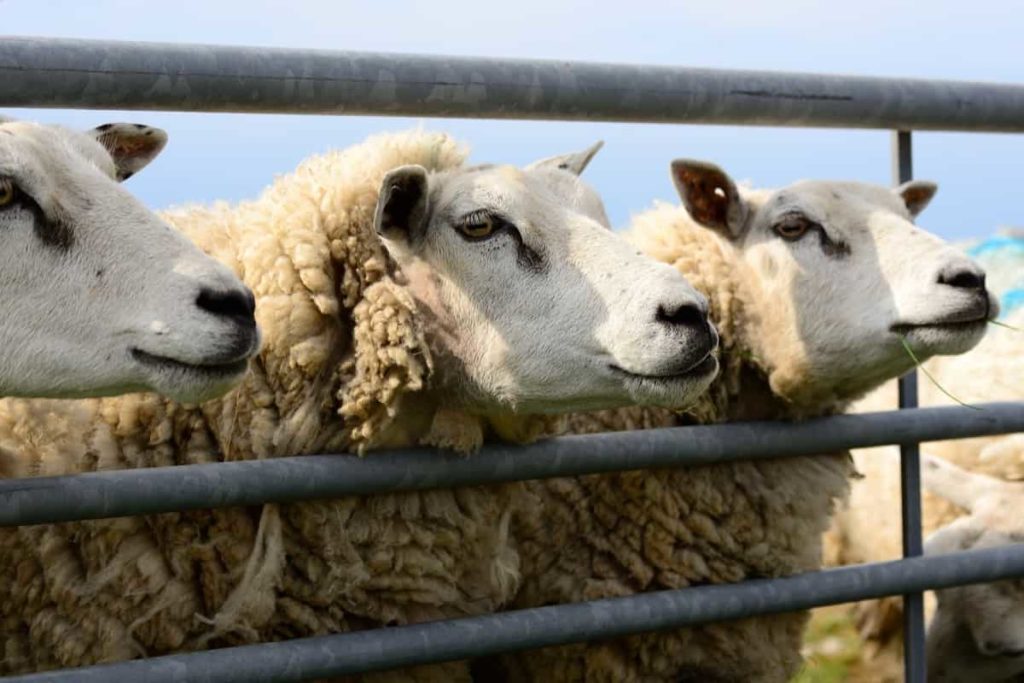
Lamb is marketed through a traditional channel, in which the lambs move from pastures to high-quality food systems to gain weight and then commercialize to be harvested. However, to meet the demand for better quality, lightweight lambs, a growing number of lambs are being sold as early harvest lambs and/or sold to individual consumers directly from the farm gate.
Most of the current US wool production is exported to countries where the textile industry is expanding countries as China and India. Sheep’s milk cheese and yogurt are sold on the farm or cooperative level as well as at farmers’ markets and small commercial outlets.
Popular sheep breeds in the United States
The American Sheep Industry Association (ASI) recognizes more than 60 breeds of sheep. The six breeds with the highest purebred registration are Katahdin, Hampshire, Suffolk, Dorper, Dorset, and Southdown. Although not among the top six registered breeds, Rambouillet is probably the most influential breed in the United States, as it forms the basis of most western range flocks.
- American Tunis
- Merino wool sheep
- Rambouillet
- Hampshire sheep
- Ancon sheep
- California red sheep
- Columbia sheep
- Debouillet sheep
- Delaine Merino
- Gulf Coast native sheep
- Hog island sheep
- Katahdin sheep
- Montadale
- Navajo-churro
- Panama sheep
- Polled Dorset
- Polypay
- Romeldale
- Royal white
- Santa Cruz sheep
- Targhee sheep
- Dorper sheep
- Dorset sheep
Sheep health problems in the USA
A healthy flock is essential for the successful operation of sheep. The disease reduces sheep function, overall growth rate, immunity, and reproductive efficiency. In the United States, it is difficult to make and prioritize recommendations regarding research needs and control measures for sheep disease because of a lack of data on the economic impact and the actual spread of most diseases affecting the sheep industry.
Currently, stomach and intestinal parasites (worms) cause considerable economic damage, and they are increasingly resisting drugs. In addition, the United States has a shortage of approved animal medicines aimed at less common animal breeds, such as sheep. The veterinarian shortage is a challenge for the sheep industry in many parts of the country.
In case you miss this: Sheep Feed Chart and Weight Chart
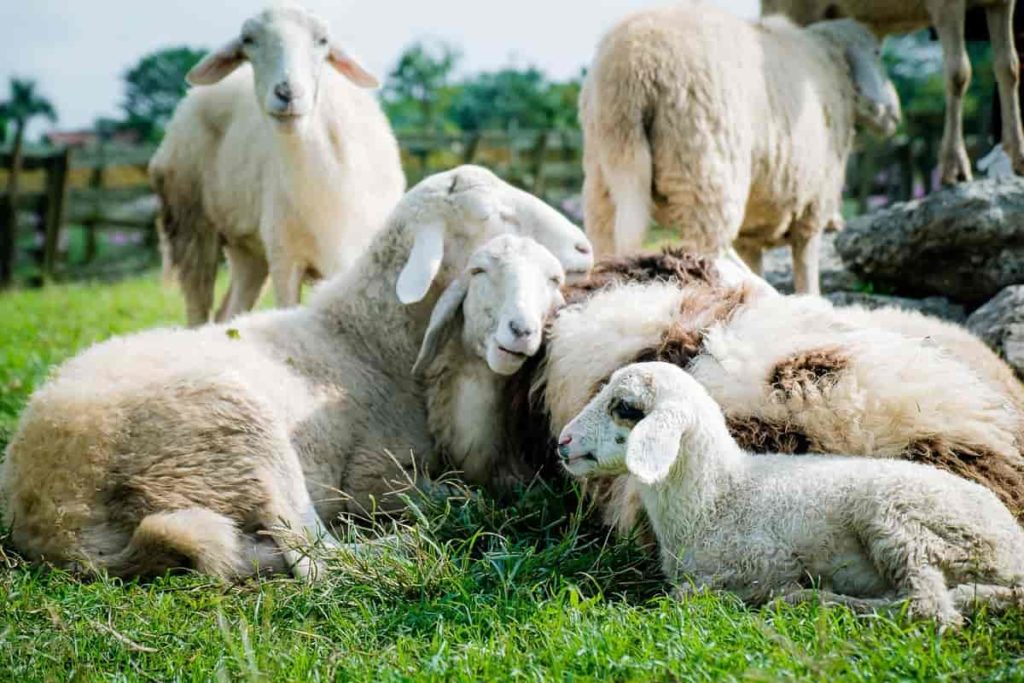
Other diseases that could have significant economic effects on the American sheep industry include Johne’s disease, foot rot, and foreign animal diseases, such as foot and mouth disease. Although rare in the United States, scrapie is a degenerative disease that affects the central nervous system of sheep and has raised some public health concerns. Progress has been made and there are more viable opportunities to reduce the economic impact of the disease.
Therefore, as a result of nationwide efforts that include the National Scrapie Eradication Program, there has been some important progress in efforts to eliminate scrapie from the United States. Improving the use of identification systems to monitor animal movements as the basis of a comprehensive flock health program and improvements in biosecurity practices could further reduce the economic impact of the disease.
Conclusion
Sheep meat and wool have excellent demand in the United States. If you properly set up a sheep farm with a business plan, you can expect good revenue from this livestock. Many Asians are already establishing sheep farms in the US, especially in California, Florida, Georgia, Texas, and many other southern states.
- Types of Pesticides Used in Agriculture: A Beginner’s Guide
- Economical Aquaculture: A Guide to Low-Budget Fish Farming
- 15 Common Planting Errors That Can Doom Your Fruit Trees
- How to Make Houseplants Bushy: Effective Tips and Ideas
- Innovative Strategies for Boosting Coconut Pollination and Yield
- Pollination Strategies for Maximum Pumpkin Yield
- The Complete Guide to Chicken Fattening: Strategies for Maximum Growth
- Natural Solutions for Tulip Problems: 100% Effective Remedies for Leaf and Bulb-Related Issues
- Revolutionizing Citrus Preservation: Towards a Healthier, Greener Future
- Natural Solutions for Peony Leaf and Flower Problems: 100% Effective Remedies
- Maximizing Profits with Avocado Contract Farming in India: A Comprehensive Guide
- Natural Solutions for Hydrangea Problems: 100% Effective Remedies for Leaf and Flowers
- The Ultimate Guide to Choosing the Perfect Foliage Friend: Bringing Life Indoors
- From Sunlight to Sustainability: 15 Ways to Use Solar Technology in Agriculture
- The Ultimate Guide to Dong Tao Chicken: Exploring from History to Raising
- The Eco-Friendly Makeover: How to Convert Your Unused Swimming Pool into a Fish Pond
- Mastering the Art of Delaware Chicken Farming: Essentials for Healthy Backyard Flocks
- 20 Best Homemade Fertilizers for Money Plant: DIY Recipes and Application Methods
- How to Craft a Comprehensive Free-Range Chicken Farming Business Plan
- Brighten Your Flock: Raising Easter Egger Chickens for Beauty and Bounty
- How to Optimize Your Poultry Egg Farm Business Plan with These Strategies
- Subsidy for Spirulina Cultivation: How Indian Government Schemes Encouraging Spirulina Farmers
- Ultimate Guide to Raising Dominique Chickens: Breeding, Feeding, Egg-Production, and Care
- Mastering the Art of Raising Jersey Giant Chickens: Care, Feeding, and More
- Ultimate Guide to Raising Legbar Chickens: Breeding, Farming Practices, Diet, Egg-Production
- How to Raise Welsummer Chickens: A Comprehensive Guide for Beginners
- How to Protect Indoor Plants in Winter: A Comprehensive Guide
- Ultimate Guide to Grow Bag Gardening: Tips, Tricks, and Planting Ideas for Urban Gardeners
- Guide to Lotus Cultivation: How to Propagate, Plant, Grow, Care, Cost, and Profit
- Agriculture Drone Subsidy Scheme: Government Kisan Subsidy, License, and How to Apply Online
- Ultimate Guide to Raising Araucana Chickens: Breed Profile, Farming Economics, Diet, and Care
- Bringing Hydroponics to Classroom: Importance, Benefits of Learning for School Students
- Ultimate Guide to Raising Polish Chickens: Breed Profile, Farming Economics, Diet, and Care
- Ultimate Guide to Raising Australorp Chickens: Profile, Farming Economics, Egg Production, Diet, and Care
- Silkie Chicken Farming: Raising Practices, Varieties, Egg Production, Diet, and Care
- Sussex Chicken Farming: Raising Practices, Varieties, Egg Production, Diet and Care
I’ve been trying to find information on raising merino sheep in the northern parts of the US such as Maine. Is weather fitting enough for raising them? I know they need to be dry and out of the elements as much as possible. Are there any know northern farms or homesteaders that you know of raising sheep in similar climates? Thanks